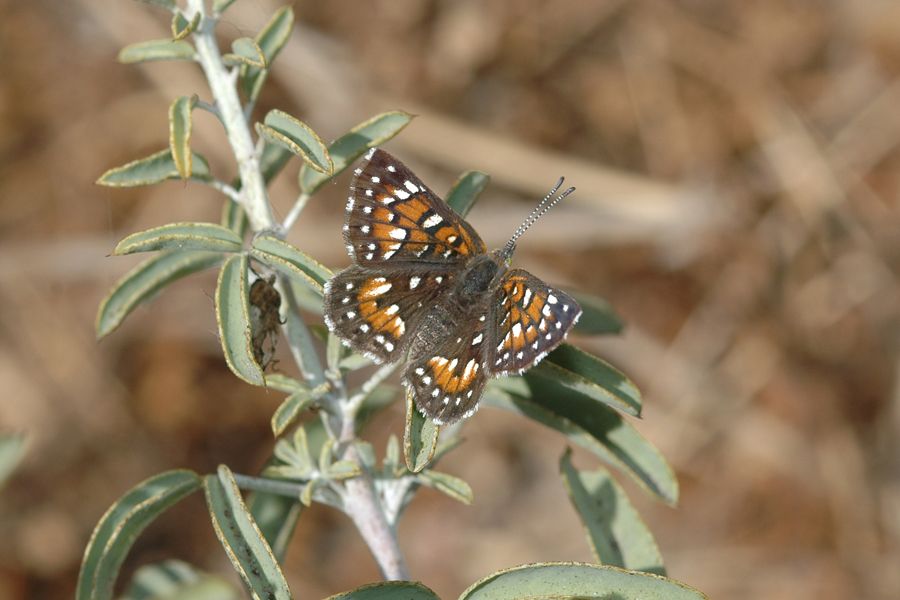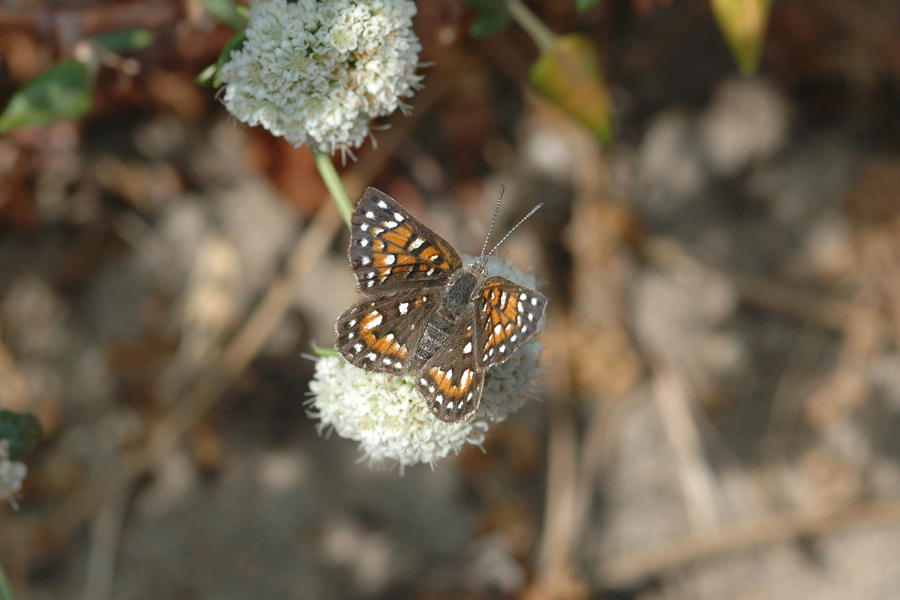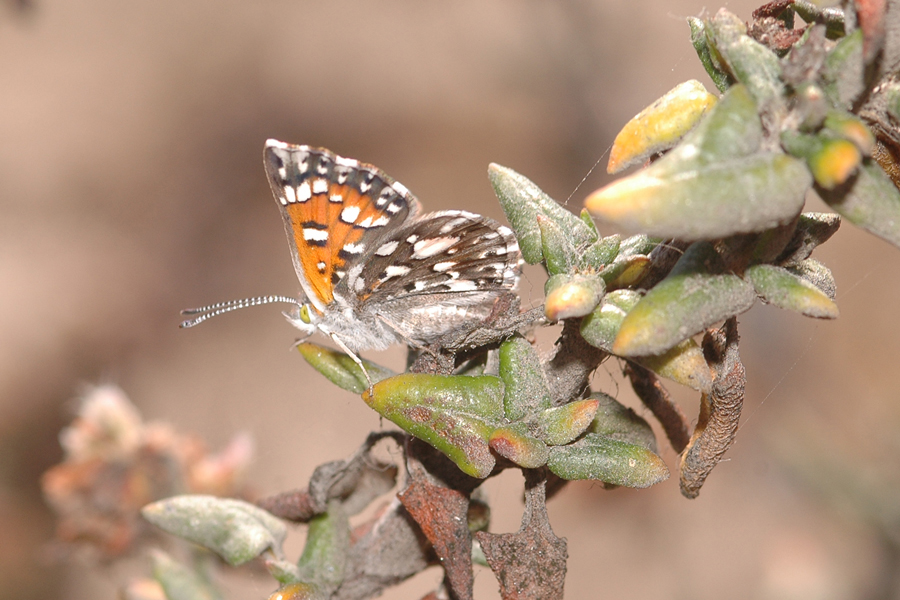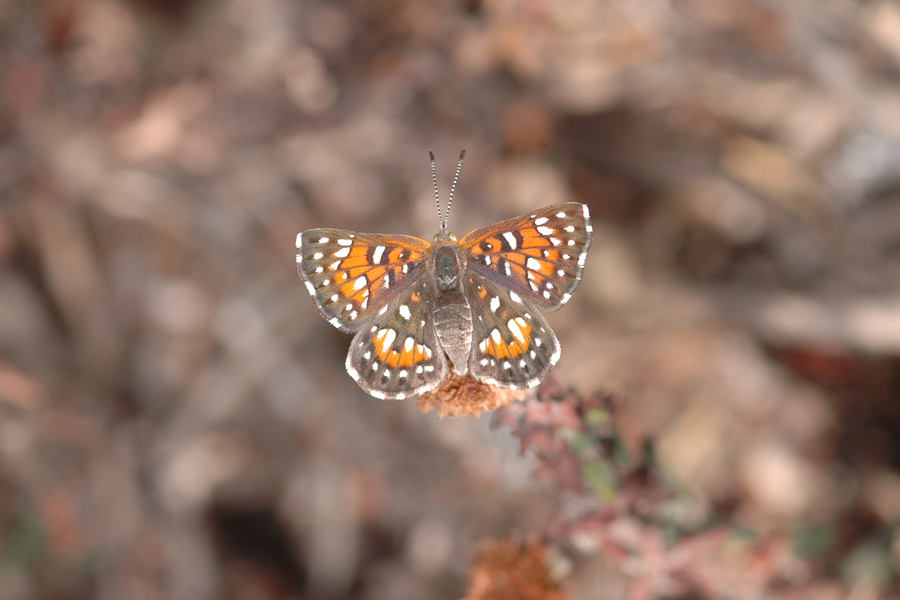Apodemia virgulti arenaria
Sand Dunes Metalmark
Subspecies arenaria is distinguished from nominate virgulti in several ways: the dark areas on the wings are more blackish-gray on both sides, whereas virgulti is more brownish (this was more noticable to the naked eye, and some more than others); the two white spots in the basal area of the dorsal forewing are usually smaller, and the postbasal white spot near the inner margin is usually absent or nearly so as in these photos; on the hind wing, the postmedian white spots are well-developed; and finally, the host is Eriogonum parvifolium while nominate virgulti uses fasciculatum. However, these are less important distinctions than what one sees in DNA work: arenaria may look similar to other mormo species, but it appears to have branched off the family tree before any others, a result that is a real surprise, but it's been repeated.



